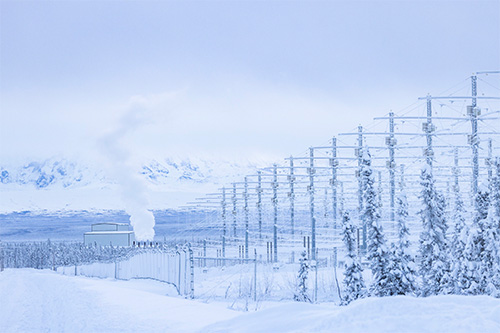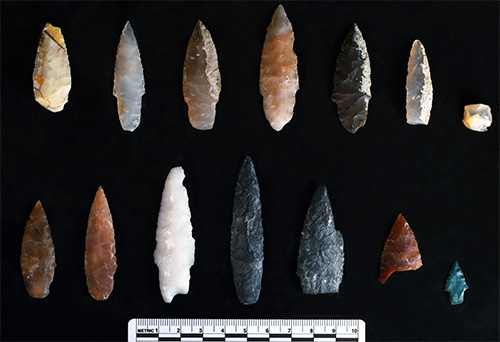












 Contact Contact 
 Webmail
Letters Webmail
Letters
 News Tips News Tips
 Copyright Info Copyright Info
 Archives Archives
Quick News
Search
 Alaska Alaska
 Ketchikan Ketchikan
 SE Alaska SE Alaska
Columns
- Articles
 Dave Kiffer Dave Kiffer
 Money Matters Money Matters
Historical
Ketchikan
 June Allen June Allen
 Dave
Kiffer Dave
Kiffer
 Louise
B. Harrington Louise
B. Harrington
Sports
 Ketchikan Links Ketchikan Links
Public Records
 FAA Accident Reports FAA Accident Reports
 NTSB
Accident Reports NTSB
Accident Reports
 Court Calendar Court Calendar
 Recent Filings & Case Dispositions Recent Filings & Case Dispositions
 Court Records Search Court Records Search
 Sex Offender Reg. Sex Offender Reg.
 Public Notices Public Notices
 Alaska Recall Alerts Alaska Recall Alerts
 Recalls.gov Recalls.gov
 AST Daily Dispatch AST Daily Dispatch
 KTN
Police Reports KTN
Police Reports
 Juneau Police Reports Juneau Police Reports
Weather,
Webcams
 Today's
Forecast Today's
Forecast
 KTN
Weather Data KTN
Weather Data
 AK
Weather Map AK
Weather Map
 AK Weathercams AK Weathercams
 AK Earthquakes AK Earthquakes

|

Sunday
January 01, 2023
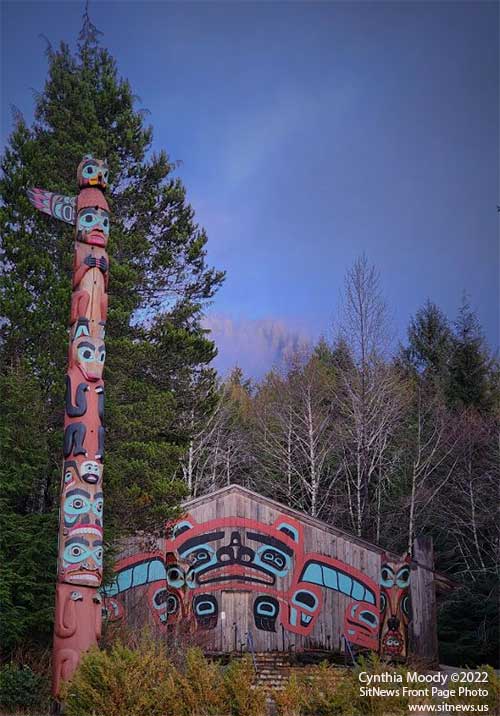
Happy New Year 2023
Saxmon Sunset
SitNews Front Page Photo By CYNTHIA MOODY©2023
To have your photo(s) featured on the front page,
email your photo(s) to editor@sitnews.us |
|
Ketchikan: 2022 Year in Review By DAVE KIFFER - Ketchikan finally began to move out of the COVID era in 2022.
Retail sales generally rebounded, if not quite to 2019 levels. Travel inside and outside resumed and many local events were in person for the first time in three years.
The number of cruise passengers topped one million, with a little over 760,000 downtown and just under 250,000 in Ward Cove. Projections were for up to 1.5 million in 2023. The previous high was 1.3 million in 2019.
JANUARY
The first Ketchikan baby in 2022 was from Wrangell. Ryleigh Crowley was born at 3:30 am on Jan. 4 at the Ketchikan Medical Center to Tawney and Isabella Crowley.
The 12-day Alaska Board of Fish meeting that had been expected to bring some 300 visitors to the First City in early January, was postponed because of travel issues that plagued the region. The meetings were eventually moved to Anchorage in March over the objects of residents in Southeast.
Heavy snowfall the first two weeks of the month made driving difficult and many roads nearly impassible in Ketchikan and the rest of the region
Residents were saddened to hear that former resident Tomas Butterfield was apparently killed by a great white shark in the waters of Morro Bay, California
Another rockslide from the hill across from Wolfe Point shut down the North Tongass Highway on January 13. The area had three previous rockslides in the past two years. Eventually concrete barriers were put in place to keep rocks off the highway.
Hyder was hit by one of the largest snowstorms in its history, when more than 36 inches of new snow was recorded on Jan. 10.
The Inter-Island Ferry Authority celebrated in 20th anniversary on January 14.
A Ketchikan jury found Tyler Cavanaugh, 24, guilty of second-degree murder in the July 17, 2020, beating death of Peter Jensen, 43. He was later sentenced to 30 years in prison, with 10 years suspended.
The omicron virus hit Ketchikan hard in late January. Positives topped 350 in one week, the highest number of the pandemic. But only a handful of cases were serious enough for hospitalization.
Ketchikan resident Julie Sande was named State Commerce Commissioner by Governor Mike Dunleavy.
Two ferries, the Kennicott and the Hubbard, collided while one was maneuvering near the shipyard late in the month. No injuries were reported, but there was damage to both ships.
Paige Bohlert and Brock Thomas were named homecoming queen and king at ceremonies at Ketchikan High School.
Norman Skan, Melissa Johnson and Chas Edwardson were reelected to the Ketchikan Indian Community Tribal Council. Trixie Bennett was named the new chair of the council.
The Kayhi Drama, Debate and Forensics team won the state title. Team members were: Carlo Cadiente, Divisha Jagtiani, Ila Smith, Kamryn Craig, Morgan Davis, Eddie Gomez, Jocelyn Cannon, Chloe Gosnell, Bella Kershaw, Peter Satya, Liam Urquhart, Emery Mattson, Braxton Zink, Lauren Olson, Madisen Lundamo, Jack Zink, Elloianne Greaves, Ethan Kershaw and coach David Mitchel.
FEBRUARY
A fire in an apartment building next to the state office building caused significant damage to the three-story building and left three families without homes. There were no injuries.
A break in the weather finally ended a nearly two month long cold and snow spell. More than four feet of snow was recorded between early December and early February and snow was on the ground for nearly 60 days.
A Postal Service truck caught fire and burned up on Oyster Avenue while making its rounds.
The Ketchikan school board investigated an incident in which racist actions were alleged against the Kayhi pep club during a game with Metlakatla. The board determined that the pep club had not intentionally meant to invoke the idea of “cowboys versus Indians” but that dressing in “country” gear had left that impression. The board investigation also determined that several members of the pep club had used “racist” words and sounds during the game. The School Board apologized to Metlakatla as did the pep club and the Kayhi basketball team. The school board determined that while the students did not act intentionally, that the Kayhi administration should have recognized the situation and acted to prevent it.
Michael Robbins, the administrator at the Nelson Island School in Toksook Bay, was named the permanent Ketchikan School District superintendent.
There was a second house fire in February. This one damaged a house on Garden Lane. It was caused by a mattress being too close to a heater. There were no injuries.
MARCH
With the COVID 19 pandemic reaching its two-year anniversary. Ketchikan had recorded a total of 3,638 cases, 41 hospitalizations and 21 deaths.
The state began work on a year long project to improve the Herring Cove bridge. The $11 million project will widen the bridge and turned Herring Cove into a large traffic snarl just in time for the tourist season.
Daniel Doty, a US Attorney in Fairbanks was appointed to replace William Carey who retired as a state Superior Court Judge in Ketchikan.
Like all Alaskan residents, Ketchikan residents were shocked by the sudden death of long US Rep. Don Young, 88. Young died on his way to Ketchikan for one of his regular visits to the First City.
Amanda Schoolland, the music teacher at Metlakatla junior high and high school, was honored as one of Yamaha Band Corporations “40 under 40” teachers in the United States.
Jeff Walls was named Ketchikan Police Chief. Walls had previously worked in New Orleans.
The Ketchikan City Council approved naming the City Council Chambers after Lew Williams III and the City Hall after Karl Amylon. Both of whom passed away last year. The council later named the Waterfront Promenade after Len Laurance.
The Ketchikan High School girls basketball team had a good showing in the state tournament, only losing to eventual champion Anchorage Christian and finishing third in the tourney. Janae Rhodes was named to the All-State team. The girls team had previously won the Region V title.
The Metlakatla boys team finished second in Division 2A and the girls team finished 5th. The Klawock Chieftains girls team finished 2nd in Division 1A. - More...
Sunday - January 01, 2023 |
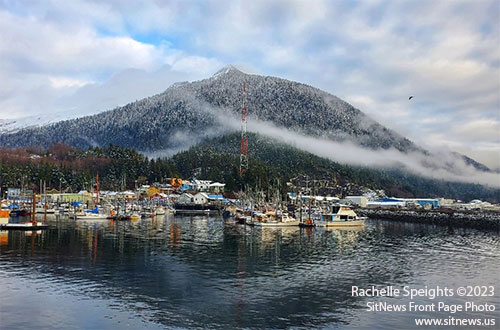
Ketchikan: Deer Mountain From Berth 1
SitNews Front Page Photo By RACHELLE SPEIGHTS ©2023
To have your photo(s) featured on the front page,
email your photo(s) to editor@sitnews.us |
|
Alaska: New Study: Bering Land Bridge formed surprisingly late during last ice age - A new study shows that the Bering Land Bridge, the strip of land that once connected Asia to Alaska, emerged far later during the last ice age than previously thought.
The unexpected findings shorten the window of time that humans could have first migrated from Asia to the Americas across the Bering Land Bridge.
The findings also indicate that there may be a less direct relationship between climate and global ice volume than scientists had thought, casting into doubt some explanations for the chain of events that causes ice age cycles. The study was published on December 27 in the Proceedings of the National Academy of Sciences.
“This result came totally out of left field,” said Jesse Farmer, postdoctoral researcher at Princeton University and co-lead author on the study. “As it turns out, our research into sediments from the bottom of the Arctic Ocean told us not only about past climate change but also one of the great migrations in human history."
Insight into ice age cycles
During the periodic ice ages over Earth’s history, global sea levels drop as more and more of Earth’s water becomes locked up in massive ice sheets. At the end of each ice age, as temperatures increase, ice sheets melt and sea levels rise. These ice age cycles repeat throughout the last 3 million years of Earth’s history, but their causes have been hard to pin down.
By reconstructing the history of the Arctic Ocean over the last 50,000 years, the researchers revealed that the growth of the ice sheets - and the resulting drop in sea level — occurred surprisingly quickly and much later in the last glacial cycle than previous studies had suggested.
“One implication is that ice sheets can change more rapidly than previously thought,” Farmer said.
During the last ice age’s peak of the last ice age, known as the Last Glacial Maximum, the low sea levels exposed a vast land area that extended between Siberia and Alaska known as Beringia, which included the Bering Land Bridge. In its place today is a passage of water known as the Bering Strait, which connects the Pacific and Arctic Oceans.
Based on records of estimated global temperature and sea level, scientists thought the Bering Land Bridge emerged around 70,000 years ago, long before the Last Glacial Maximum.
But the new data show that sea levels became low enough for the land bridge to appear only 35,700 years ago. This finding was particularly surprising because global temperatures were relatively stable at the time of the fall in sea level, raising questions about the correlation between temperature, sea level and ice volume.
“Remarkably, the data suggest that the ice sheets can change in response to more than just global climate,” Farmer said. For example, the change in ice volume may have been the direct result of changes in the intensity of sunlight that struck the ice surface over the summer.
“These findings appear to poke a hole in our current understanding of how past ice sheets interacted with the rest of the climate system, including the greenhouse effect,” said Daniel Sigman, Dusenbury Professor of Geological and Geophysical Sciences at Princeton University and Farmer’s postdoctoral advisor. “Our next goal is to extend this record further back in time to see if the same tendencies apply to other major ice sheet changes. The scientific community will be hungry for confirmation.” - More..
Sunday - January 01, 2023 |
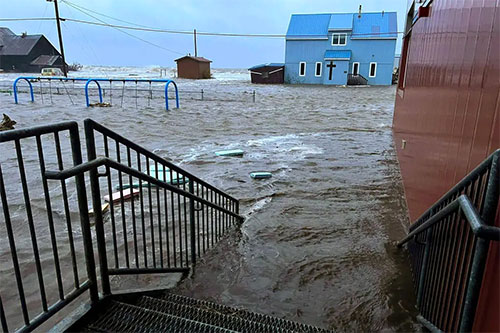
What Alaskans can learn from the Arctic Report Card
By HEATHER MCFARLAND
Surging Bering Sea waters, driven inland by typhoon Merbok in September 2022, flow through Golovin, Alaska, damaging a third of the homes in this photo by Josephine Daniels published in the Arctic Report Card’s Consequences of Rapid Environmental Arctic Change for People section.
Photo by Josephine Daniels |
|
Alaska: What Alaskans can learn from the Arctic Report Card By HEATHER MCFARLAND - Alaskans can learn much about their state in the 2022 Arctic Report Card released nationwide recently. The Arctic and Alaska are growing warmer and wetter, University of Alaska Fairbanks scientists are at the heart of tracking this and other Arctic changes, and Alaskans are calling for people to work together to address the consequences of climate change.
The Arctic Report Card checks in annually on the state of the Arctic via key “vital signs,” ranging from air and ocean temperature to sea ice and snow. The report also discusses emerging topics like increased Arctic ship traffic. It is produced by the National Oceanic and Atmospheric Administration and released at the fall meeting of the American Geophysical Union.
Precipitation added as a vital sign of Arctic change
This year, precipitation was added as an eighth vital sign in the report card. For the first time, scientists detected a long-term trend showing that Arctic precipitation is increasing in every season.
“We used more than one data set and got the same conclusion — the Arctic is getting wetter,” said John Walsh, the section's lead author and UAF International Arctic Research Center chief scientist. “Up until the last year or two, there wasn't much consensus about trends in Arctic precipitation. Now we've crossed that line and can say that Arcticwide precipitation is increasing, and it's increasing significantly.”
The trend is spottier in Alaska. But October 2021 to September 2022 (reflecting the standard measurement period for annual precipitation) was the second wettest year since 1950. The increases have been mostly in Southeast Alaska and the North Slope, where a 30% increase from the 1985-2014 average is expected by the end of the century. In northern Alaska, the change is enhanced by sea ice loss. A longer open water period makes more moisture available to fall out as precipitation.
Within the trend, heavy precipitation events are increasing. Over the past year, Utqiaġvik saw its wettest day on July 26, Cook Inlet its wettest July-August and Fairbanks its wettest December during the “snowpocalypse.”
The change is at the heart of high-impact events, such as wildfire and freezing rain, that Alaskans have been seeing.
It might seem that more precipitation would curtail Alaska wildfires, but a simultaneous temperature increase complicates the picture. This year’s report card shows that the 2021-2022 water year was the sixth warmest on record in the Arctic. Alaska, however, experienced a relatively cool year, ranking 27th since 1900. - More...
Sunday - January 01, 2023
|
| Alaska: NASA and HAARP conclude asteroid experiment By ROD BOYCE - A powerful transmitter in remote Alaska sent long wavelength radio signals into space last Tuesday (Dec. 27, 2022) with the purpose of bouncing them off an asteroid to learn about its interior.
The asteroid, 2010 XC15, is estimated to be about 500 feet across and is passing by Earth at two lunar distances, which is twice the distance between the Earth and the moon.
Results of the Dec. 27th’s experiment at the High-frequency Active Auroral Research Program research facility at Gakona could aid efforts to defend Earth from larger asteroids that could cause significant damage.
“We will be analyzing the data over the next few weeks and hope to publish the results in the coming months,” said Mark Haynes, lead investigator on the project and a radar systems engineer at NASA’s Jet Propulsion Laboratory in Southern California. “This experiment was the first time an asteroid observation was attempted at such low frequencies.
“This shows the value of HAARP as a potential future research tool for the study of near-Earth objects,” he said.
Several programs exist to quickly detect asteroids, determine their orbit and shape and image their surface, either with optical telescopes or the planetary radar of the Deep Space Network, NASA’s network of large and highly sensitive radio antennas in California, Spain and Australia.
Those radar-imaging programs don’t provide information about an asteroid’s interior, however. They use signals of short wavelengths, which bounce off the surface and provide high-quality external images but don’t penetrate an object. - More...
Sunday - January 01, 2023 |
|
Northwest: Archaeologists uncover oldest known projectile points in the Americas By MOLLY ROSBACK - Oregon State University archaeologists have uncovered projectile points in Idaho that are thousands of years older than any previously found in the Americas, helping to fill in the history of how early humans crafted and used stone weapons. The 13 full and fragmentary projectile points, razor sharp and ranging from about half an inch to 2 inches long, are from roughly 15,700 years ago, according to carbon-14 dating. That's about 3,000 years older than the Clovis fluted points found throughout North America, and 2,300 years older than the points previously found at the same Cooper's Ferry site along the Salmon River in present-day Idaho.
The findings were published recently in the journal Science Advances.
"From a scientific point of view, these discoveries add very important details about what the archaeological record of the earliest peoples of the Americas looks like," said Loren Davis, an anthropology professor at OSU and head of the group that found the points. "It's one thing to say, 'We think that people were here in the Americas 16,000 years ago;' it's another thing to measure it by finding well-made artifacts they left behind."
Previously, Davis and other researchers working the Cooper's Ferry site had found simple flakes and pieces of bone that indicated human presence about 16,000 years ago. But the discovery of projectile points reveals new insights into the way the first Americans expressed complex thoughts through technology at that time, Davis said.
The Salmon River site where the points were found is on traditional Nez Perce land, known to the tribe as the ancient village of Nipéhe. The land is currently held in public ownership by the federal Bureau of Land Management.
The points are revelatory not just in their age, but in their similarity to projectile points found in Hokkaido, Japan, dating to 16,000-20,000 years ago, Davis said. Their presence in Idaho adds more detail to the hypothesis that there are early genetic and cultural connections between the ice age peoples of Northeast Asia and North America. - More...
Sunday - January 01, 2023
|
DAVE KIFFER: "Weather or not, we know it's coming" - Once upon a time, the weather just happened.
You woke up in the morning and it was raining.
Or snowing.
Or "oh my God, Auntie Em just got carried off by a twister!"
Sure, there were some omens out there. Maybe you saw the "red sky at morning." Or you noticed the clouds had a greenish hue. Perhaps, some larger waves began rolling in or the wind direction changed suddenly.
Maybe someone said that they smelled "snow in the air." Or someone else's knee started acting up.
But, in general, there was very little warning. And that was not a good thing. - More...
Sunday - January 01, 2023
TOM PURCELL: BEST 2023 RESOLUTION? GET A PET. - It was late December of 2020. COVID cabin fever was hitting me hard.
As a writer and communications consultant, I’ve long worked from an office in my home.
I was used to working alone at home, but COVID isolation was pushing me beyond my limits.
Family issues were also weighing me down. My father, then 87, was facing a series of health challenges.
I was on guard day and night, waiting for a phone call to ask me to help get him off the floor because his legs were no longer able to hold him.
Isolation and stress — and constant worry about getting COVID and passing it on to my parents — were weighing me down.
My oldest sister, Kathy, offered what she thought was the perfect solution to my woes: - More...
Sunday - January 01, 2023
PETER ROLF: IN MANY STATES, WELFARE PAYS MORE THAN WORK - It may seem a cruel thing to ask whether the government gives too much money away in the name of helping the poor, especially at this time of year, when reminders to help the less fortunate are omnipresent. It is nonetheless necessary to pose the question.
Most of us agree there is dignity in work. We see self-reliance and the ability to stand on one’s own feet as being worthwhile. And we recognize there is and ought to be a profound difference between charity and subsidy.
Unfortunately, poll-obsessed policymakers and their advisers, their vision distorted by stories about the misfortune experienced by those living life in the lowest economic quintile, may have lost sight of these things.
As well-intentioned as they might be, the elite class advocates who want to spend more and more tax dollars on behalf of the needy are seeking outcomes that do more harm than good to everyone. - More...
Sunday - January 01, 2023
FINANCIAL FOCUS: Time for New Year’s financial resolutions Provided By BEN EDWARDS, AAMS® - It’s that time of year when many of us promise ourselves we’ll go to the gym more, or learn a new language, or take up a musical instrument, or any number of other worthy goals. But this year, when making New Year’s resolutions, why not also consider some financial ones?
Here are a few to consider:
• Don’t let inflation derail your investment strategy. As you know, inflation was the big financial story of 2022, hitting a 40-year high. And while it may moderate somewhat this year, it will likely still be higher than what we experienced the past decade or so. Even so, it’s a good idea to try not to let today’s inflation harm your investment strategy for the future. That happened last year: More than half of American workers either reduced their contributions to their 401(k)s and other retirement plans or stopped contributing completely during the third quarter of 2022, according to a survey by Allianz Life Insurance of North America. Of course, focusing on your cash flow needs today is certainly understandable, but are there other ways you can free up some money, such as possibly lowering your spending, so you can continue contributing to your retirement accounts? It’s worth the effort because you could spend two or three decades as a retiree. - More...
Sunday - January 01, 2023
|
POLITICAL CARTOONS
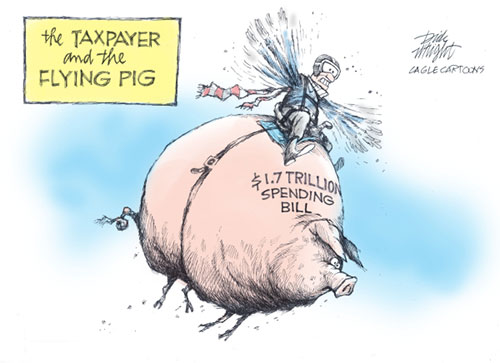
Political Cartoon: Taxpayers and the Flying Pig
by Dick Wright©2023, PoliticalCartoons.com
Distributed to subscribers for publication by CagleCartoons.com

Political Cartoon: Happy 2023
by Bruce Plante©2023, PoliticalCartoons.com
Distributed to subscribers for publication by CagleCartoons.com
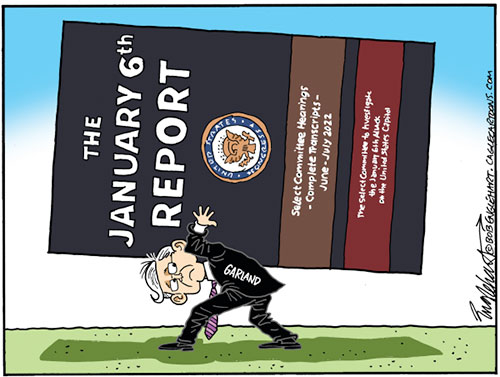
Political Cartoon: January 6 Report
by Bob Englehart©2023, PoliticalCartoons.com
Distributed to subscribers for publication by CagleCartoons.com

Political Cartoon: The curse of Sisyphus
by Rivers©2023, CagleCartoons.com
Distributed to subscribers for publication by CagleCartoons.com

Political Cartoon: Post-Christmas Denial
by Rivers©2023, CagleCartoons.com
Distributed to subscribers for publication by CagleCartoons.com

Political Cartoon: 2023 Medicaid rollback
by John Cole©2023, Georgia Recorder, georgiarecorder.com
Distributed to subscribers for publication by CagleCartoons.com |
UPDATE IN PROGRESS; THANKS FOR YOUR PATIENCE.
It’s an honor to now lead Alaska’s largest renewable resource By Deven Mitchell, Executive Director, Alaska Permanent Fund Corporation - This October, I was provided the opportunity to serve as the Executive Director of the Alaska Permanent Fund Corporation. As a lifelong Alaskan, leading APFC is my childhood dream come true. From meeting with Governor Hammond with my third-grade class in 1976, to receiving the benefits of the Fund’s existence throughout my life, to now having the experience to manage the Corporation is truly special.
To tell a little about myself, I was born in Cordova and raised in Yakutat and Juneau, where my wife Erin and I reside and raised our two sons. For several decades, I served as Alaska’s Debt Manager and Executive Director of the Alaska Municipal Bond Bank Authority.
In my career, I often explained and highlighted the strengths of the Permanent Fund and the talented staff of the Corporation. I am pleased to report that during my first month on the job, my long-standing belief in an organization comprised of top-notch talent and a culture of outperformance has been validated.
As we count down to 2023, I encourage you to pause and reflect on what a remarkable decision Alaskans made in 1976 when they voted to set aside money that they could have spent then to ensure future generations of Alaskans would also benefit from the state’s resource wealth. Think about that, every year since the Fund was established, the people of Alaska have made do with less to ensure the Permanent Fund would be able to benefit future generations. That intergenerational foresight for saving and investing a portion of the state’s revenue has helped Alaskans in the past, is supporting us today, and is being managed to continue providing in the future. - More...
Sunday - December 04, 2022
Jobs are up! Wages are up! So why am I as an economist so gloomy? By EDOUARD WEMY - In any other time, the jobs news that came down on Dec. 2, 2022, would be reason for cheer.
The U.S. added 263,000 nonfarm jobs in November, leaving the unemployment rate at a low 3.7%. Moreover, wages are up – with average hourly pay jumping 5.1% compared with a year earlier.
So why am I not celebrating? Oh, yes: inflation.
The rosy employment figures come despite repeated efforts by the Federal Reserve to tame the job market and the wider economy in general in its fight against the worst inflation in decades. The Fed has now increased the base interest rate six times in 2022, going from a historic low of about zero to a range of 3.75% to 4% today. Another hike is expected on Dec. 13. Yet inflation remains stubbornly high, and currently sits at an annual rate of 7.7%.
The economic rationale behind hiking rates is that it increases the cost of doing business for companies. This in turn acts as brake on the economy, which should cool inflation.
But that doesn’t appear to be happening. A closer dive into November’s jobs report reveals why.
It shows that the labor force participation rate – how many working-age Americans have a job or are seeking one – is stuck at just over 62.1%. As the report notes, that figure is “little changed” in November and has shown “little net change since early this year.” In fact, it is down 1.3 percentage points from pre-COVID-19 pandemic levels.
This suggests that the heating up of the labor market is being driven by supply-side issues. That is, there aren’t enough people to fill the jobs being advertised.
Companies still want to hire – as the above-expected job gains indicate. But with fewer people actively looking for work in the U.S., companies are having to go the extra yard to be attractive to job seekers. And that means offering higher wages. And higher wages – they were up 5.1% in November from a year earlier – contribute to spiraling inflation. - More....
Sunday - December 04, 2022
Email your opinions and letters for publication to editor@sitnews.us
|
Articles &
photographs that appear in SitNews may be protected by copyright
and may not be reprinted or redistributed without written permission
from and payment of required fees to the proper sources.
E-mail your news &
photos to editor@sitnews.us
Photographers choosing to submit photographs for publication to SitNews are in doing so, granting their permission for publication and for archiving. SitNews does not sell photographs. All requests for purchasing a photograph will be emailed to the photographer.
|
|












|
|
![]() Contact
Contact ![]()
![]() Webmail
Letters
Webmail
Letters![]()
![]() News Tips
News Tips![]()
![]() Copyright Info
Copyright Info![]() Archives
Archives![]() Alaska
Alaska![]() Ketchikan
Ketchikan![]() SE Alaska
SE Alaska![]() Dave Kiffer
Dave Kiffer![]() Money Matters
Money Matters ![]() June Allen
June Allen![]() Dave
Kiffer
Dave
Kiffer![]() Louise
B. Harrington
Louise
B. Harrington ![]() Ketchikan Links
Ketchikan Links![]() FAA Accident Reports
FAA Accident Reports ![]() NTSB
Accident Reports
NTSB
Accident Reports![]() Court Calendar
Court Calendar![]() Recent Filings & Case Dispositions
Recent Filings & Case Dispositions ![]() Court Records Search
Court Records Search![]() Sex Offender Reg.
Sex Offender Reg.![]() Public Notices
Public Notices![]() Alaska Recall Alerts
Alaska Recall Alerts![]() Recalls.gov
Recalls.gov![]() AST Daily Dispatch
AST Daily Dispatch![]() KTN
Police Reports
KTN
Police Reports![]() Juneau Police Reports
Juneau Police Reports ![]() Today's
Forecast
Today's
Forecast![]() KTN
Weather Data
KTN
Weather Data![]() AK
Weather Map
AK
Weather Map![]() AK Weathercams
AK Weathercams![]() AK Earthquakes
AK Earthquakes



















